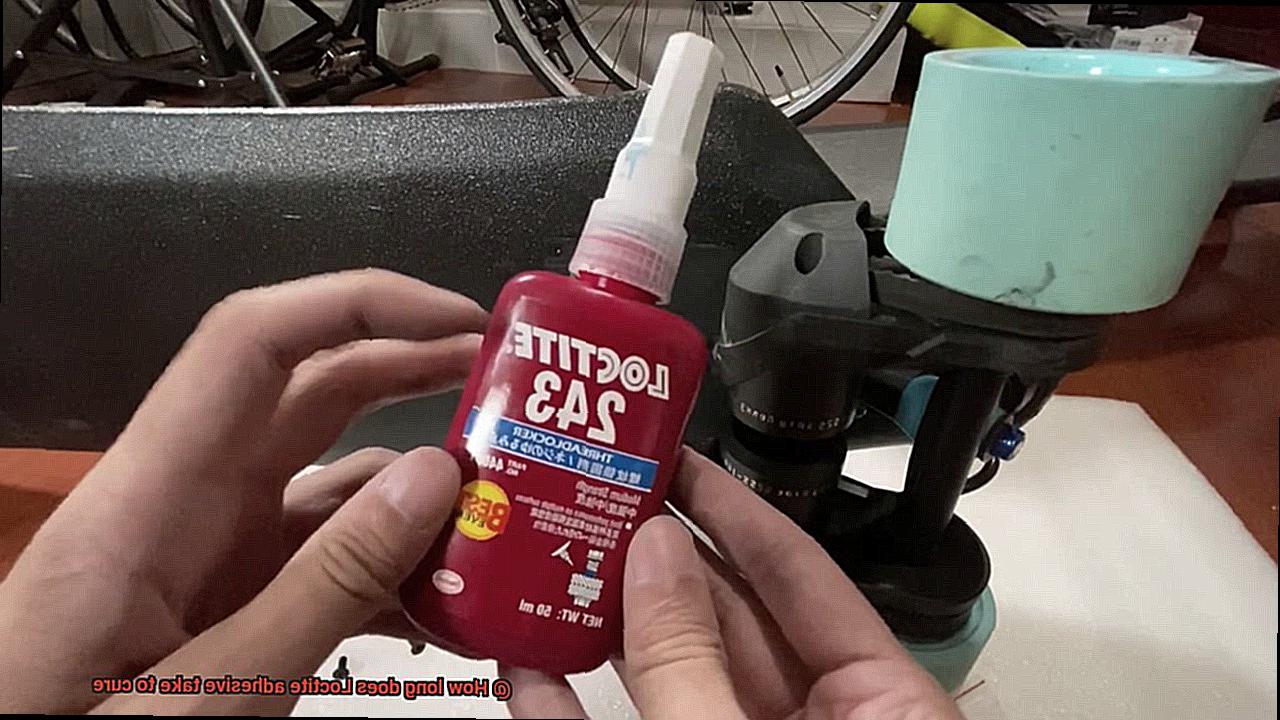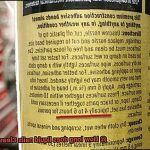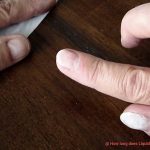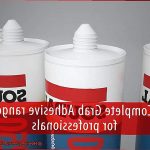Whether you’re a DIY guru or a seasoned pro, knowing the curing time of this sticky wonder is key to nailing your projects. It’s like having a secret weapon up your sleeve – you can plan your timeline like a boss and avoid any pesky mishaps.
So, sit back, sip on that cup of joe, and let’s explore the fascinating world of Loctite adhesive curing time together.
Understanding the Curing Time of Loctite Adhesive
Contents
- 1 Understanding the Curing Time of Loctite Adhesive
- 2 Factors Affecting the Curing Time of Loctite Adhesive
- 3 Ideal Conditions for Quick Curing of Loctite Adhesive
- 4 Allowing Sufficient Curing Time for Maximum Bond Strength
- 5 Impact of Environmental Conditions on the Curing Time of Loctite Adhesive
- 6 Specialized Fast-Curing Adhesives from Loctite
- 7 Following Manufacturer Instructions for Optimal Results
- 8 Conclusion
Loctite adhesive is renowned for its exceptional bonding properties and versatility. To fully comprehend this adhesive’s capabilities, it is essential to understand its curing time. Curing time refers to the duration required for Loctite adhesive to harden completely and achieve its maximum strength. In this article, we will explore the various factors that can influence the curing time of Loctite adhesive, providing valuable insights for readers seeking a comprehensive understanding of this adhesive.
Type of Loctite Adhesive:
- Instant Adhesives: These super glues have a remarkably fast curing time, often reaching peak strength within minutes.
- Epoxy Adhesives: These adhesives involve mixing two components and generally have a longer curing time that can vary from a few hours to several days.
- Threadlockers: Frequently employed in mechanical applications, these adhesives possess a medium curing time that allows ample time for part assembly before setting.

Environmental Conditions:
- Temperature: Higher temperatures typically accelerate the curing process, while colder temperatures can impede it.
- Humidity: Elevated humidity levels may expedite curing, whereas lower humidity levels might prolong it.
Substrate Material:
Additional Considerations:
- Adhering to the manufacturer’s instructions is crucial for optimal curing results.
- While Loctite adhesive may achieve its maximum strength within the specified curing time, it is advisable to allow additional time for full curing before subjecting it to stress or load-bearing applications.
- Factors such as humidity, temperature, and substrate type can significantly impact the curing time; hence, it is vital to consider these aspects during application.
- Loctite offers specialized adhesives with faster curing times for immediate bond strength requirements.
Factors Affecting the Curing Time of Loctite Adhesive
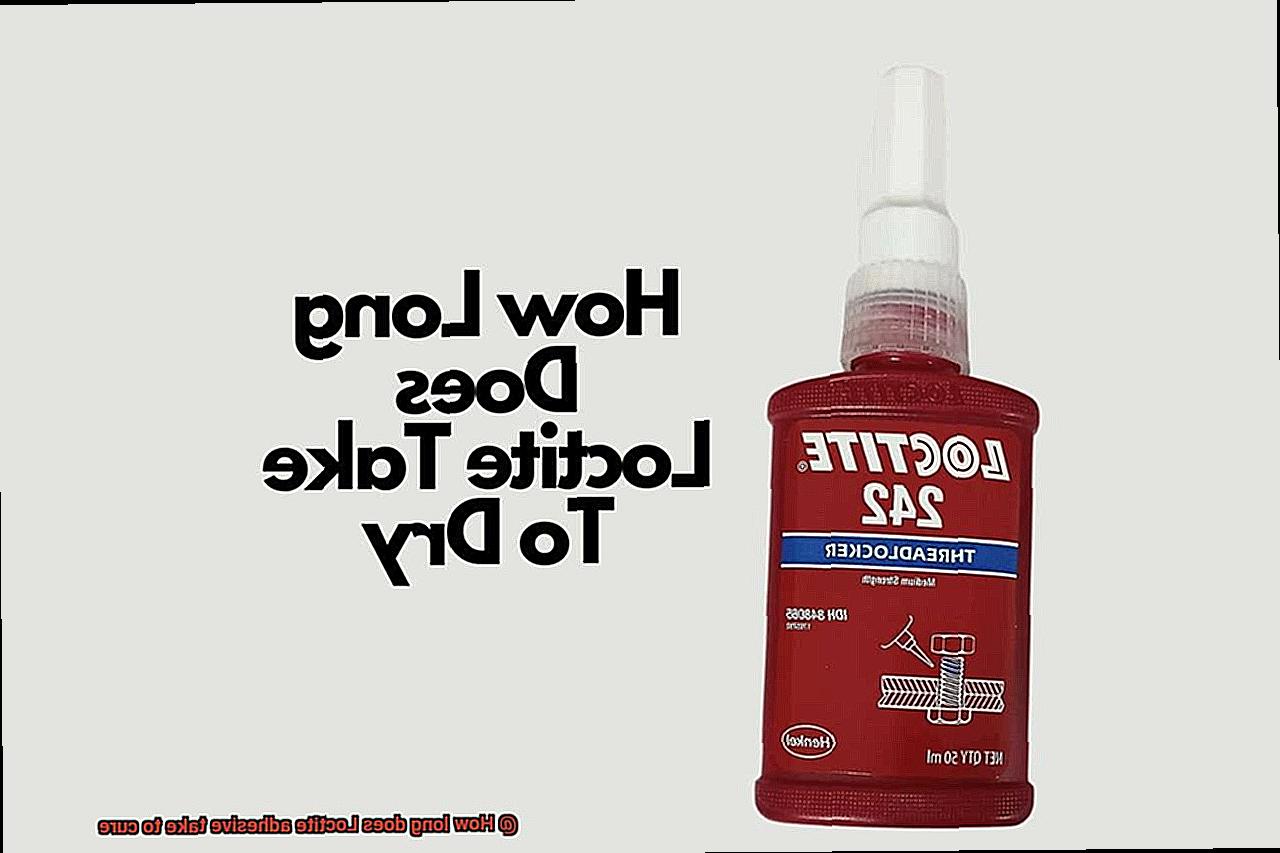
- Temperature: Just like humans, Loctite adhesive prefers a cozy environment. Higher temperatures speed up the curing process, while colder temperatures slow it down. So, if you’re working in a chilly workshop, be prepared for a longer wait. On the flip side, if you’re lucky enough to be working in a tropical paradise, your adhesive will cure faster than you can say “sticky situation.”
- Humidity: Believe it or not, Loctite adhesive is a bit of a moisture magnet. When exposed to high humidity levels, it can absorb moisture from the air, which affects its curing process. To avoid any hiccups, aim for humidity levels between 40-60%. Too much moisture can prolong the curing time and leave you waiting longer than expected.
- Substrate Materials: Different materials have different surface characteristics and porosity levels, which can impact how well the adhesive bonds and cures. If you’re working with porous materials like wood or concrete, be prepared for a slightly longer curing time compared to non-porous materials like metal or plastic. Patience is key.
- Bond Thickness: Thicker bond lines take longer for oxygen to reach the adhesive and kickstart the curing process. So, if you’re working with a thick bond line, grab your favorite book and settle in for a slightly longer wait. Thin bond lines are like speed demons in comparison.
- Mixing Ratio: Some Loctite adhesives come in two-part formulations that require mixing before application. It’s important to follow the instructions carefully and get that mixing ratio spot on. Incorrect ratios can lead to incomplete curing or a prolonged process. You don’t want your adhesive throwing a temper tantrum, do you?
- Chemical Compatibility: Certain chemicals or contaminants on the substrate surface can interfere with the adhesive’s curing process. Make sure the surface is squeaky clean, dry, and free from any oils or grease before applying the adhesive. Nobody wants their bond to be compromised by unwanted guests.
Ideal Conditions for Quick Curing of Loctite Adhesive
I have a treasure trove of tips and tricks to share with you on how to achieve quick curing of Loctite adhesive. Let’s dive in.
- Embrace the heat: Loctite adhesives thrive in high temperatures. If you’re in a hurry, try cranking up the heat a little. Just be sure to check the temperature range recommended by the manufacturer to avoid any mishaps.
- Ignite the power of heat curing: Need an extra kick? Heat curing is your secret weapon. By applying heat, you can speed up the curing process significantly. Dig out your trusty oven mitts or unleash the power of heat lamps to get that adhesive curing in no time. Just remember to stay within the maximum temperature limits set by the manufacturer.
- Prep for success: Before applying Loctite adhesive, make sure your substrate is clean, dry, and free from any contaminants. Give it a gentle sanding or an etching to roughen the surface and promote faster curing.
- The humidity hustle: Humidity can pull some tricks on curing time. Higher humidity levels can slow down the cure rate, while lower humidity levels can accelerate it. Check the product technical data sheet or reach out to Loctite’s technical support team to see if humidity is a factor for your adhesive.
- Apply pressure like a pro: Don’t underestimate the power of pressure during curing. Whether it’s clamping, using weights, or applying mechanical pressure, exerting force ensures proper contact between the adhesive and substrate, resulting in quicker and stronger bonds.
- Breathe in the fresh air: Ventilation is key during curing. It helps eliminate fumes and by-products, creating a safer working environment and promoting efficient curing.
Allowing Sufficient Curing Time for Maximum Bond Strength
Allowing sufficient curing time for maximum bond strength is of utmost importance when using Loctite adhesives. Curing time refers to the duration it takes for an adhesive to fully dry and reach its strongest bonding capability.
It is crucial to consult the technical data sheet for accurate curing time information as it can vary depending on the specific product and application.
Disturbing the bond before it is fully cured can result in weakened or failed bonds, making patience a virtue in this process. Temperature, humidity, and substrate material are factors that can influence curing time. Higher temperatures and lower humidity levels can accelerate curing while colder temperatures and higher humidity levels can slow it down.
To ensure maximum bond strength, it is essential to follow the manufacturer’s instructions regarding curing time and conditions. Adequate ventilation, maintaining the recommended temperature range, and avoiding moisture exposure during the curing process are all factors to consider.
Accelerators or activators can be used to speed up curing time in certain cases. These products are applied before applying the adhesive and help promote faster drying and bonding. However, it is important to follow the manufacturer’s recommendations when using these products.
It is worth noting that while Loctite adhesives may reach their full bond strength within a specified curing time, they may continue to strengthen over a longer period. This means that allowing for a longer curing time can ensure a more reliable and durable bond, especially for thicker bond lines or specific materials.
Impact of Environmental Conditions on the Curing Time of Loctite Adhesive
Time is of the essence when it comes to adhesive bonding. Loctite adhesives are renowned for their strength and versatility, but did you know that the environmental conditions in which they are applied can significantly impact their curing time? In this article, we will delve into the fascinating science behind how temperature, humidity, air circulation, substrate material, and external factors influence the curing time of Loctite adhesive.
Temperature:
Temperature plays a crucial role in the curing process of Loctite adhesive. Higher temperatures accelerate chemical reactions, leading to faster curing times. On the other hand, lower temperatures slow down these reactions and prolong the curing process. Each type of Loctite adhesive has its own optimal temperature range for curing, so referring to the product datasheet or instructions provided by Loctite is essential for specific temperature recommendations.
Humidity:
Humidity levels also affect the curing time of Loctite adhesive. Higher humidity accelerates the curing process by providing moisture that facilitates chemical reactions. Conversely, low humidity levels can delay curing as there may not be enough moisture available for complete cure. Maintaining the recommended humidity range during curing ensures optimal bond strength.
Air Circulation:
Proper air circulation is vital for efficient curing of Loctite adhesive. Adequate air movement helps remove volatile components from the adhesive, promoting faster curing. Stagnant air or poor ventilation can trap these volatile components, resulting in longer curing times. Optimize your workspace by ensuring good ventilation to enhance the curing process.
Substrate Material:
The type of material on which the Loctite adhesive is applied can impact its curing time. Different materials have varying thermal conductivity properties, affecting heat transfer to or from the adhesive. This thermal conductivity influences the rate at which the adhesive cures. Considering the substrate material is crucial when estimating curing time accurately.
External Factors:
External factors like dust, dirt, and contaminants can interfere with the adhesive’s ability to bond properly and affect its curing time. Ensure a clean application area free from potential contaminants before using Loctite adhesive for optimal results.
Specialized Fast-Curing Adhesives from Loctite
Loctite’s specialized fast-curing adhesives are the secret to quick and reliable bonding. Tired of waiting around for glue to dry? Need a bonding solution that won’t let you down? Look no further than Loctite’s range of specialized adhesives designed for rapid bonding, minimizing downtime, and maximizing productivity.
Loctite 401 Instant Adhesive is a popular choice for its rapid bonding capabilities. It can bond porous and non-porous surfaces, making it versatile for different applications. With excellent resistance to moisture, chemicals, and temperature variations, your bond will be durable and long-lasting.
Dealing with larger surface areas or uneven substrates? Loctite 3090 Two-Component Fast Cure Epoxy is the go-to adhesive. Combining the speed of an instant adhesive with the strength of an epoxy, this adhesive ensures accurate mixing and has a short curing time for quick handling and further processing.
For even faster cure times, Loctite offers UV-curing adhesives like the Loctite 3525 Light Cure Acrylic Adhesive. These adhesives cure upon exposure to ultraviolet (UV) light, eliminating the need for additional curing time or heat application. Perfect for electronic and optical assemblies.
In addition to their fast-curing properties, Loctite’s specialized adhesives offer high bond strength, flexibility, and resistance to environmental factors. They meet the stringent requirements of industries such as automotive, electronics, medical devices, and aerospace.
Remember, curing times may vary depending on factors such as substrate type, formulation, application method, and environmental conditions. Always refer to the product datasheet or consult with technical experts for specific guidelines.
Following Manufacturer Instructions for Optimal Results
Loctite adhesives possess superhero-like qualities, swooping in to save the day with their lightning-fast bonding powers. However, like any superhero, they need instructions to reach their full potential. In this blog post, we will explore why following the manufacturer’s instructions is crucial for optimal results when using Loctite adhesive. So grab your cape and let’s dive in.
Mastering Curing Time:
Loctite adhesives come in various types, each with its specific curing time. The manufacturer’s instructions hold valuable information on how long it takes for the adhesive to fully set. Rushing the process can result in weaker bonds or even complete failure. Patience is key here.
Surface Preparation Techniques:

Surface preparation is a crucial step that should never be overlooked. The manufacturer’s instructions guide you on proper techniques tailored to the specific Loctite adhesive you are using. This step ensures effective bonding and maximum strength.
Recommended Amount and Application:
Using too much or too little adhesive can significantly impact bonding strength. Manufacturer instructions specify the recommended amount to use and provide application guidelines. Following these guidelines guarantees consistent and reliable bonds every time.
Environmental Factors:
Temperature and humidity can affect Loctite adhesive’s curing time. The manufacturer’s instructions provide an ideal temperature range for application and curing. Additionally, proper ventilation during curing expedites the process.
Full Cure vs. Initial Cure:
Understanding that initial cure doesn’t equate to full strength is crucial. Manufacturer instructions specify the recommended curing time for optimal bond strength. Avoid subjecting bonded materials to stress or load until fully cured.
FPG2AKCxzGE” >
Conclusion
In conclusion, the curing time of Loctite adhesive is influenced by a multitude of factors. The type of adhesive, environmental conditions, substrate material, bond thickness, mixing ratio, and chemical compatibility all contribute to how long it takes for the adhesive to fully cure.
Loctite offers a range of adhesives with different curing times. Instant adhesives work at lightning speed, reaching peak strength within minutes. Epoxy adhesives involve a two-component mixture and generally require more time to cure, ranging from a few hours to several days. Threadlockers strike a balance with a medium curing time that allows for ample assembly before setting.
The environment in which the adhesive is applied also impacts its curing time. Higher temperatures provide an energy boost to the process, hastening the cure. Conversely, colder temperatures can put the brakes on curing speed. Humidity levels also come into play – higher humidity may expedite curing while lower humidity might prolong it.
The material being bonded is yet another factor affecting cure speed. Porous surfaces tend to demand more time for proper bonding compared to non-porous counterparts.
For optimal results, it’s crucial to adhere to the manufacturer’s instructions. While Loctite adhesive may reach its maximum strength within the specified curing time, allowing extra time for full curing before subjecting it to stress or load-bearing applications is advisable.
Loctite even offers specialized adhesives designed for immediate bond strength requirements with faster curing times.
By understanding these factors and following instructions diligently, you can ensure that your Loctite adhesive cures flawlessly and achieves its maximum bonding prowess.

